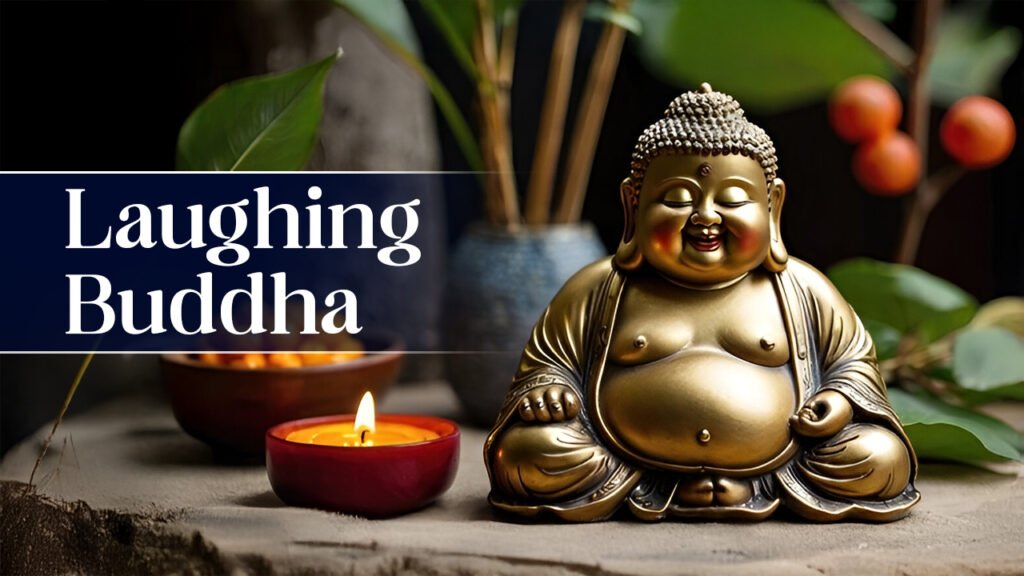Introduction to the Laughing Buddha
Have you ever come across a jolly, rotund figure with a big belly and an even bigger smile? That’s the Laughing Buddha, a symbol that’s captured hearts and imaginations across the globe. This cheerful character isn’t just a decorative piece; it’s a powerful symbol of joy, wealth, and spiritual abundance. Let’s dive into the world of the Laughing Buddha and discover why this figure has become such a beloved icon.
Read Also: Aquarius Innovates: Tech & Creativity Collide in 2025
Origins and History
Chinese folklore
The Laughing Buddha has its roots deep in Chinese folklore. Legend has it that this merry figure was inspired by a monk who lived during the 10th century. This monk, known for his jolly nature and his ability to predict the future, became a sort of folk hero.
Connection to Budai
Interestingly, the Laughing Buddha is often associated with a Chinese monk named Budai. Budai, whose name literally means “cloth sack,” was known for carrying a large sack filled with candy for children. His generosity and cheerful demeanor made him a popular figure, and over time, he became synonymous with the Laughing Buddha we know today.
Symbolism of the Laughing Buddha
Joy and happiness
First and foremost, the Laughing Buddha represents unbridled joy and happiness. His infectious laugh and beaming smile serve as a reminder to find joy in the simple things in life. In a world that can often feel overwhelming, the Laughing Buddha encourages us to lighten up and embrace happiness.
Prosperity and abundance
Beyond joy, this figure is also associated with prosperity and abundance. The Laughing Buddha’s round belly is seen as a symbol of wealth and plenty. It’s not just about material wealth, though. This abundance extends to all areas of life, including relationships, experiences, and spiritual growth.
Good luck and fortune
Many believe that having a Laughing Buddha figurine can bring good luck and fortune. It’s not uncommon to see people rubbing the Buddha’s belly for luck before an important event or decision.
For interesting astrology-related videos, subscribe to us on YouTube
Physical Characteristics
Rotund belly
The most distinctive feature of the Laughing Buddha is undoubtedly his large, round belly. Far from being a sign of overindulgence, this belly represents abundance and contentment. It’s a physical manifestation of the idea that true wealth comes from within.
Bald head and smiling face
The Laughing Buddha is typically depicted with a bald head and a face split by a wide, joyous grin. These features emphasize his monk-like appearance and his perpetual state of happiness.
Various poses and gestures
Laughing Buddha statues come in various poses and with different accompanying symbols. Some show him standing, others sitting. He might be holding a bag of wealth, a string of prayer beads, or a fan. Each pose and accessory adds layers of meaning to the figure.
Cultural Significance
In Buddhism
While the Laughing Buddha isn’t directly related to the historical Buddha, he has become an important figure in some Buddhist traditions. He’s seen as a symbol of enlightenment through joy and contentment rather than through asceticism.
In Feng Shui
In Feng Shui, the ancient Chinese practice of harmonizing individuals with their surrounding environment, the Laughing Buddha plays a significant role. He’s often used to attract positive energy and good fortune to a space.
In popular culture
The image of the Laughing Buddha has transcended its religious and cultural origins to become a popular icon worldwide. You’ll find his likeness on everything from keychains to t-shirts, restaurant signs to corporate logos.
Read Also:Karma Meets Power: Pluto’s Reckoning in Capricorn
Placing the Laughing Buddha
Home placement
In homes, the Laughing Buddha is often placed near the entrance to welcome visitors with joy and abundance. Some people also place him in the living room or dining area to promote harmony and prosperity in family life.
Office placement
In office settings, a Laughing figurine is believed to bring success and good fortune. It’s often placed on desks or in reception areas to create a positive atmosphere.
Garden placement
Outdoor Laughing statues are popular in gardens. Here, they’re said to bring joy and abundance to nature, promoting growth and harmony in the outdoor space.
Rituals and Practices
Rubbing the belly
One of the most common practices associated with the Laughing is rubbing his belly. This is believed to bring good luck and prosperity. It’s a simple gesture that connects the individual with the spirit of abundance that the Buddha represents.
Offering coins or food
Some people place coins or food offerings in front of their Laughing statues. This practice is thought to amplify the statue’s ability to attract wealth and abundance.
Laughing Buddha in Different Countries
China
In China, the Laughing is known as Budai or Pu-Tai. He’s considered a deity of contentment and abundance, and his image is ubiquitous in homes, businesses, and temples.
Japan
In Japan, the Laughing is called Hotei. He’s one of the Seven Lucky Gods in Japanese mythology and is associated with happiness and good fortune.
Vietnam
In Vietnam, the Laughing is known as Bồ Đề Đạt Ma. He’s often depicted in a similar style to the Chinese version and holds similar symbolic meanings.
Modern Interpretations
In our modern world, the Laughing has taken on new meanings. For some, he represents the idea of finding joy in the present moment, a concept that resonates strongly in our fast-paced society. For others, he’s a reminder of the importance of generosity and kindness. Regardless of individual interpretations, the Laughing continues to spread joy and inspire positivity in countless lives.
Read Also: Business Astrology: Unlock Solutions to Your Toughest Challenges
Conclusion of Laughing Buddha
The Laughing , with his jolly demeanor and rotund figure, is more than just a decorative statue. He’s a powerful symbol of joy, abundance, and spiritual wealth that has resonated across cultures and centuries. Whether you see him as a bringer of good fortune, a reminder to embrace happiness, or a spiritual guide, the Laughing offers a simple yet profound message: life is to be enjoyed, abundance is all around us, and a smile can change everything. So the next time you encounter a Laughing , why not take a moment to smile back? You might just find your day getting a little brighter.
FAQs
- Is the Laughing Buddha the same as Gautama Buddha?
No, the Laughing is not the same as Gautama Buddha, the founder of Buddhism. The Laughing is based on a Chinese monk named Budai and is a separate figure in Buddhist and Chinese folklore. - Can I have a Laughing Buddha statue if I’m not Buddhist?
Absolutely! The Laughing is widely appreciated across various cultures and beliefs for its symbolism of joy and abundance. You don’t need to be Buddhist to enjoy its positive energy. - Where should I place my Laughing Buddha statue for the best effect?
According to Feng Shui principles, placing the Laughing near your home’s entrance or in the wealth corner of your space (typically the far left corner from the main entrance) can be beneficial. - Why does rubbing the Laughing Buddha’s belly bring good luck?
This belief stems from the idea that the Buddha’s round belly represents abundance and contentment. Rubbing it is thought to connect you with these qualities and invite them into your life. - Are there different types of Laughing Buddha statues?
Yes, there are many variations of Laughing statues. Some depict him standing, others sitting. He may be holding different objects like a bag of wealth, a fan, or prayer beads. Each variation can have slightly different meanings and purposes.

